Beyond the Volga there is no land for us
... Events preceding the most ambitious stories battle armies, put the Soviet Union on the brink of a serious military failure. After the Germans cut Barvenkovsky ledge, huge spaces opened up before them - from Kharkov to the banks of the Don, - not protected by almost anything. After a ride on a steamroller over four hundred kilometers, the Germans took Rostov-on-Don. There, Army Group South was split in two: Group A turned to the Caucasus, Group B, which included Friedrich Paulus's 6 Army, rushed to Stalingrad. Taking this city would cut off the south of the USSR, giving Germany control over the Lower Volga and the vast territories of the rich Russian south. And finally, it would be Stalin personally a fascist slap in the face that the Germans, who knew a lot about propaganda and manipulation of the information process, of course, intended to use it.
Initially, Paulus sent into battle 270 thousand people, three thousand guns, more than 1000 aircraft and up to 700 tanks. The Stalingrad Front could oppose the Germans with 0,5 million people, but with technical equipment it was worse: the troops had 2200 artillery barrels, and the backlog was aviation and the tanks turned out to be even more tangible - 450 and 400 units, respectively.
The first chords of the grand battle raged on 1942 in July at the borders of the Chir River. Using superiority in technology, the Germans managed within ten days to knock down Soviet avant-gardes from positions, break through the front of the main forces, reach the Don in the Golubinsky area and create the threat of a deep breakthrough to Stalingrad, which was the original goal of Hitler’s command. But the stubborn resistance of the Soviet troops (including warmed up by the order “Not one step back!”) Thwarted the plans of the enemy. Instead of a rapid breakthrough, a brutal pushing was achieved; the enemy reached Stalingrad, but not as fast as he wanted. Nevertheless, 23 August tanks went to the Volga and the tractor factory. At the same time, the barbaric bombing by high-explosive and incendiary bombs turned most of the city into ruins - ninety thousand people were killed ... Soviet counterattacks had no decisive success.
The task of keeping the enemy at the turn of the Don Stalingrad front failed. Commander Vasily Gordov was replaced by Andrei Eremenko, and in two months the front itself underwent a whole series of reorganizations with unbundling, re-subordination and eventually renaming (in September the former Stalingrad became Donskoy, and the new Stalingrad became the former Southeast). At this point, the enemy began to compress the ring, trying to take the city by storm and drop the defenders into the Volga.
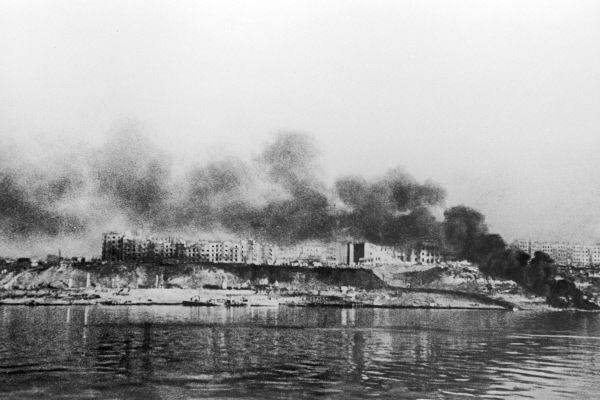
And here everything went wrong for the Germans. Of course, the experience of street fighting and the soldiers, and the enemy command was; even particularly difficult battles in the conditions of a heavily destroyed city did not seem an insurmountable difficulty ... The Volga was sweeping the whole, from coast to coast, and reinforcements to besieged Stalingrad were already well-worn. Problems should not have arisen, but they arose: our soldiers created them to the enemy. First, they did not want to give up or retreat. The Germans were forced to slowly and painstakingly clean quarter by quarter, so that, after cleansing, the next day they would again find Soviet soldiers there who had repulsed their positions with a counterattack who had made their way through the ruins of the smoke coming through the underground communications. Battles were played out for each house, many of them, like the house of Pavlov, went down in history under the names of their defenders. At the tractor factory, which became the front line, tanks were repaired under shelling; they went into battle straight from the factory gates.
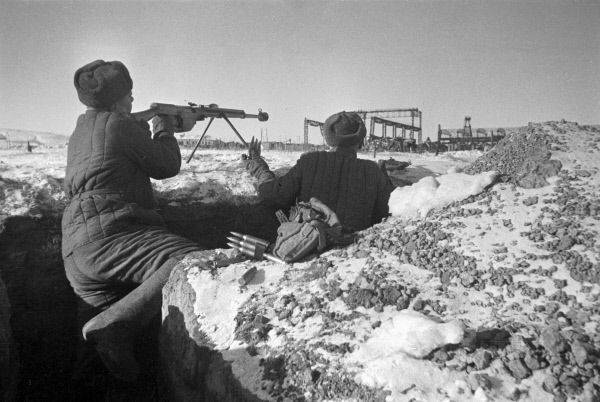
Let us return to the chronology of the fall of 1942 ... The tactics of street fighting (if this notion applies to them at all - tactics) dictated their laws, forced the Germans to fight differently than they used to. In conditions when some tens of meters (sometimes even meters!) Separated opponents on both sides of the front line, it was impossible to attract artillery and aviation for support; even small weapon it was not always possible to use in narrow corridors and sewer tunnels - due to the risk of rebound. But in the mass order flamethrowers and “antediluvian” cold weapons went into action - bayonets, knives, improvised batons ... On the streets of Stalingrad, the “war of motors” gave way to the ancient, like the world, hand-to-hand combat. And in open spaces of squares and wastelands snipers reigned.
The moment of truth came in late October - early November. The nightmare of the forty-first winter campaign already loomed before the Germans. They were in a hurry to finish the job, and the Soviet troops in the city were literally at the limit of their abilities. October 14 The 6 Army launched the last spurt. It is unlikely that such a powerful sector of the front was attacked by such powerful forces — the tractor factory and the Barricades factory attacked as many as five divisions, two of which were tank divisions. The thermometer fell below minus fifteen, the defenders lacked ammunition, supplies and, most importantly, people. But what remained of Lieutenant-General Chuikov's 62 Army literally bit into three tiny bridgeheads - the only shreds of land on this, the right bank of the Volga. And on that left, there was no land for them at all.
By mid-November, the German onslaught was exhausted. And already on the 19 number, the Soviet counteroffensive began.
The command began to plan it back in September, or rather, then it was a hypothetical draft, estimated by Stalin, Zhukov and Vasilevsky in case of a German breakthrough to Stalingrad. In detail, the plan of Operation Uranus (the entourage of the 6 Army in Stalingrad) Headquarters approved on November 13. It was the first of the three parts of the final clash on the banks of the Volga; “Uranus” was followed by operations “Saturn” and “The Ring”.
Having created absolute superiority in the forces and means at the offensive sites, Soviet troops struck from the north (Vatutin) and the south (Eremenko), feeling for the weakest points in the defense of the enemy. It is well known that the main blow was directed at the units of the allies of Germany - the Romanians, who were inferior to the Germans in training, in morale, and in technical equipment. Attempts by Paulus to remedy the situation on the spot were unsuccessful. 23 November red ticks closed around Kalach. Feeling that the case was clearly smell roasted, the German general convinced Hitler to give the go-ahead for a breakthrough from the encirclement. Theoretically, this could have worked and saved the 6 Army, while the throat was still tight, but it meant leaving Stalingrad, and for the Fuhrer the city had long been a matter of prestige. Paulus was promised support from the outside, but neither Manstein, who tried in vain to break through the Soviet ring from Kotelnikov, nor did he attempt to supply the surroundings with the help of an air bridge.
"Uranus" was a success, but still incomplete - it was not possible to smash it straight away, or even to cut and isolate the German parts from each other. Because of this, it was not possible to fully develop the design of Operation Saturn, which had to be limited to the so-called Small Saturn. Instead of a tremendous dash to the west - southwest, right up to Rostov-on-Don, it remained to limit the development of the attack on 100 – 150 – 200 kilometers. Having dispersed the Italian units, the Soviet tankers broke free to the operating room, smashing enemy bases not without success. So, on Catholic Christmas, the corps of Vasily Badanov presented the Germans with a “gift” - they literally rolled out the airfield at Tatsinskaya, destroying up to three hundred enemy aircraft on the ground! When the enemy pulled up reserves and cut off Badanov from his own, the tank crews filled the cars with fuel captured at the airfield and broke through from the encirclement. Unfortunately, the forces for the further development of the success of our troops at that time objectively did not remain, and Paulus, firmly entrenched in Stalingrad, demanded to be reckoned with. At the turn of 1942 – 1943, the front stabilized. "Small Saturn" was completed, the operation "Ring" to eliminate the Wehrmacht's 6 army began.
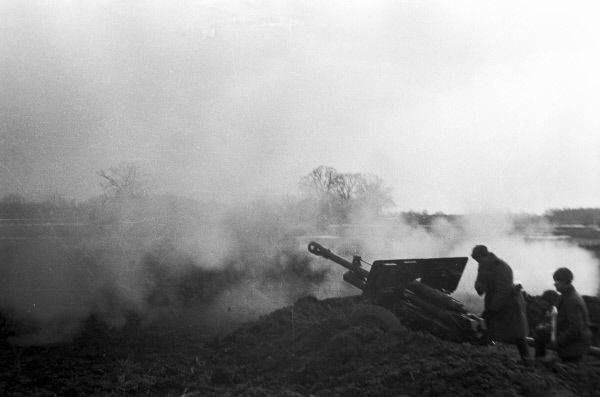
According to the plan, everything had to be completed in a week. But the soldiers of Paulus showed unprecedented fanaticism and - we must pay tribute to the enemy - resilience close to inhuman. In a severe frost, with unsuitable outfit, with supplies tending to zero, with a banal food shortage (reached for cannibalism), the Germans kept to 23 of the day. However, by January 26 it became clear that everything was over for them: Soviet troops were finally able to cut the enemy, joining in the Mamayev Kurgan area. On January 30, Hitler assigned Paulus a field marshal's rank, recalling in a radiogram that not a single German field marshal had ever been captured ... One can understand the feelings of a warlord who is so close to his limit, who was offered a heroic death (or suicide, according to the situation). Anyway, the next day he sent a request to the Soviet headquarters to accept his surrender. February 2 German resistance in Stalingrad ceased.
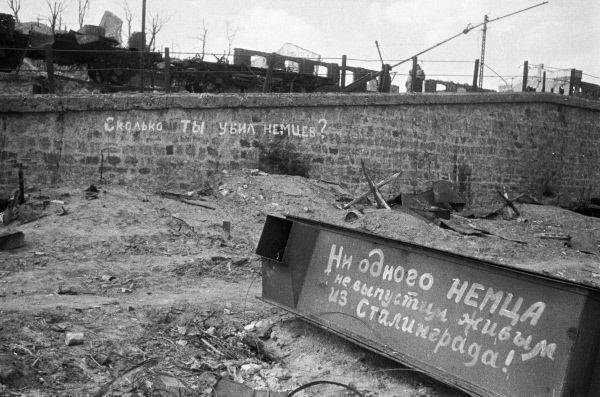
For the Reich, it was a disaster - military and moral. More than 90 of thousands of soldiers and officers, 24 general and, of course, field marshal were taken prisoner. The defeat of 1941 – 1942 near Moscow in the winter was painful and unpleasant, the Stalingrad collapse turned out to be deadly humiliating.
Goebbel propaganda denied the surrender of those surrounded in captivity - the 6 Army in full was declared dead, they even staged a sham mourning in Germany. The slap that Hitler was preparing to give to Stalin suddenly turned into a hard slap in front of him ...
... Traditionally, the Battle of Stalingrad is considered a fundamental turning point not only in the Great Patriotic War, but throughout the Second World War. And this, of course, is true from a historical point of view. Made in Stalingrad in the winter was consolidated near Kursk in the summer, the Wehrmacht lost the strategic initiative forever. However, are these words, “a radical change,” enough to describe the full significance of the 1942 event that took place in July — February — 1943? To understand what exactly was born at that moment when Chuikov’s fighters were holding out three tiny springboards of the right bank land? When did the impact forces of Vatutin and Eremenko meet with Kalach? When did the red flag fly over Mamayev Kurgan?
How to convey the feelings that arise when you stand at the foot of the legendary mound? Two hundred granite steps - like two hundred days of the Battle of Stalingrad - lead to its top, where an 87-meter statue, if you count with a raised sword, weighing eight thousand tons, rises - Motherland. Huge, like our Motherland, unbending, like the power of its defenders, and reinforced concrete, like the will to win. This, perhaps, the best work of the sculptor Yevgeny Vuchetich rose above the Mamaev Kurgan in 1967 - it took eight years to erect a grandiose statue. The sculpted embodiment of victory, our Samothrace - albeit without wings, but with a head - and here you realize the true scale of the event, which not only turned the war, but has grown into the soul and self-consciousness, written down on the subcortex, which has become one of the symbols of the national spirit. No wonder the very word "Stalingrad" has become both a household name and international. No, it is not enough just to say “radical change”! Historically correct, but not enough! For there will always be those who want to belittle our victory (“they filled up with meat”, “they sent us to fight with their bare hands”, and so on and so forth), and hunters to touch other people’s laurels (“but the allies”, “and at this time on other fronts "") ... Yes, there was the same El Alamein, according to the scale of the Stalingrad crucible - a "conflict of local significance", and with all due respect to the memory of the allied soldiers - the battle that changed the course of history, our fighters pulled out themselves. It is worth reminding the revisionists that then, in 1943, everyone perfectly understood how the era was won. Let us turn again to the collection “Stalingrad. Hitler's Greatest Failure", words of a Times journalist: "The Red Army is a thinking army, and in the eyes of its fighters you will find unquenchable curiosity, numerous talents and self-sacrifice, the steel inherent in the Russian people." Or here is a book quoting British Prime Minister K. Attlee: “It is worth paying tribute to the Soviet military command. They didn't create an army robotsbut an army of thinking, enterprising people.” And let the "radical change" for the revisionists of history sound no stronger than the "war of the Tutsi and the Hutus." But "Stalingrad" is understandable in any language without any explanation.
- Yury Emelyanov
- http://xn--h1aagokeh.xn--p1ai/special_posts/%D0%B7%D0%B0-%D0%B2%D0%BE%D0%BB%D0%B3%D0%BE%D0%B9-%D0%B4%D0%BB%D1%8F-%D0%BD%D0%B0%D1%81-%D0%B7%D0%B5%D0%BC%D0%BB%D0%B8-%D0%BD%D0%B5%D1%82/
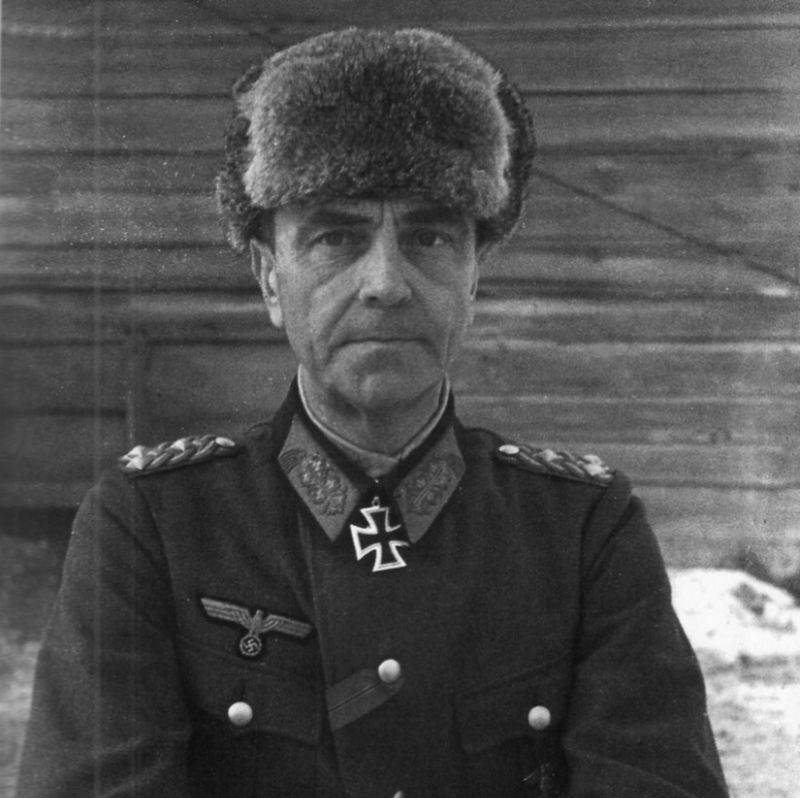
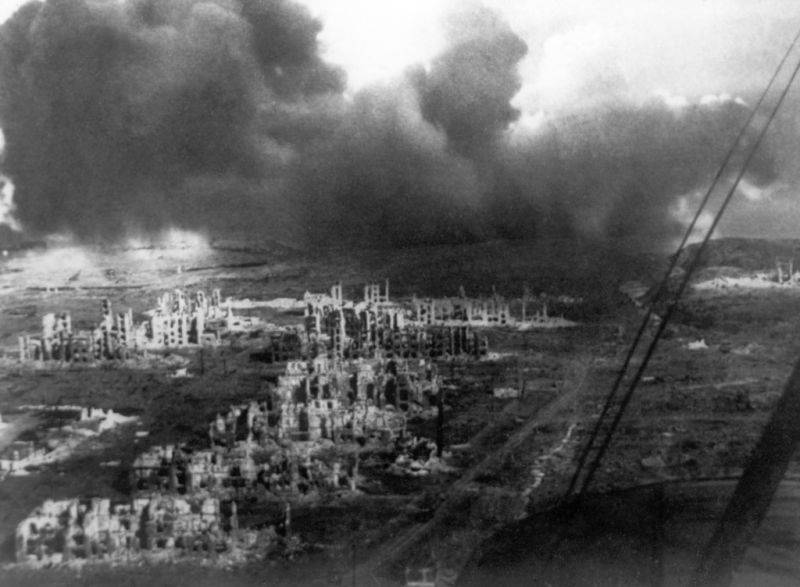
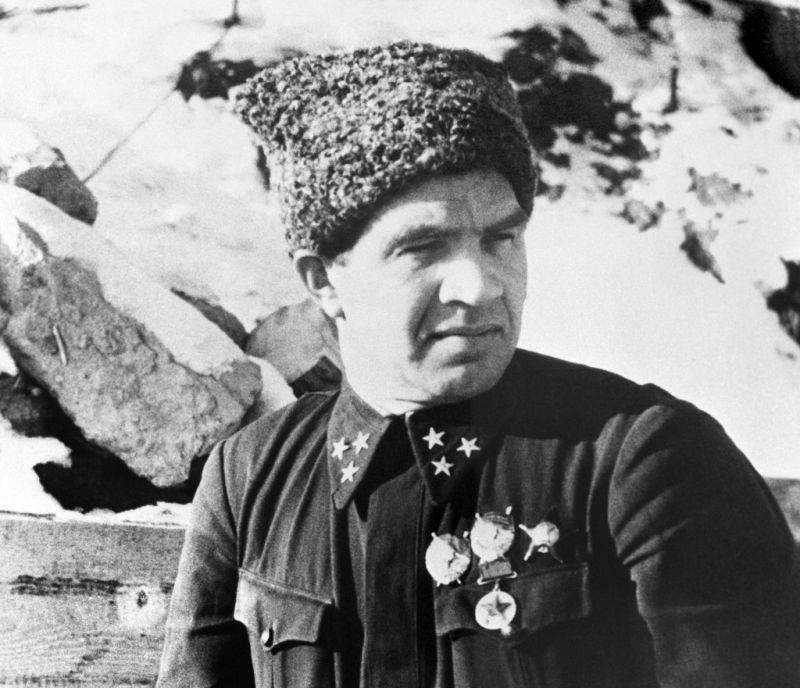
Information